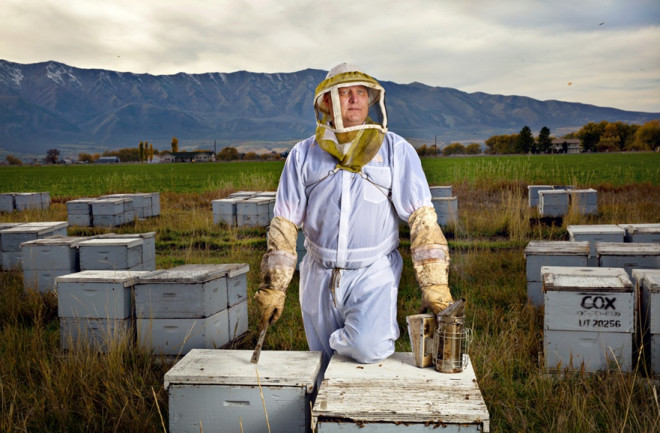Despite all the years, and all the troubles, Darren Cox still likes to put on his bee suit.
A big, block-shaped man in his 50s, Cox sports a bowlish blond haircut and serious demeanor. But when he slips into his protective gear, his netted hat in hand, he offers a rare smile. “Time to get out there,” he says.
It’s a summer day in Cache Valley, an agricultural center set among the mountains of northern Utah. The skyline, composed of peaks popping with shimmering green, speaks resoundingly of life, vibrant and fertile. Several years ago, Cox and his wife built a beautiful house here, so high up that eagles soared within feet of the living room windows. But for Cox, a commercial beekeeper fighting for his livelihood, these days even his Valhalla strikes a sour note.
“When we first got here,” Cox tells me, “there was so much wildlife. Fox and deer. Every bird you can imagine. You don’t see wildlife like you did anymore. Where’d it all go?”
Cox keeps his “livestock” in so-called bee yards placed throughout the area. Today he’ll visit them, winding through deep valleys, up tall mountains and into one of the most perplexing questions in science: What is killing our honeybees — and can we stop it?

